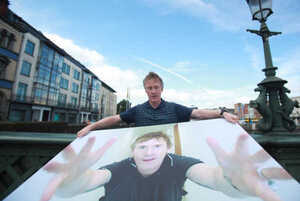For your connsideration.
Scannáin Bhaile Andy (Andrew’s Home Movies).
Andrew Kelly (top), an archivist and a collector from Kilmacthomas in Co Waterford, is the focus of a new An Corsaiceach documentary for TG4.
Linda Ní Ghríofa writes:
Since his teens. Andrew Kelly has been collecting and cataloguing photographs, negatives, camera equipment and film. To date he has over 20,000 photographs and 15,000 feet of film in his collection. He has also rescued and restored old cameras, flat-bed glazers, lanterns, specialist equipment – all items once used in the creation of film and photography. He has created his own films also, chronicling events of historic and local significance. He continues to preserve film and photographic work, which would be lost did had he not recognise their value.
In fairness.
Scannáin Bhaile Andy on April 7 at 8.30pm on TG4.





Ar fheabhas!
Ah biddah Jeebus
Sure I remember it well. The developing tank where you had to roll the film, in the dark, onto a spool and then put it in the tank, and screw on the cap. Approx 7” diameter was the tank.
Leave for 12 minutes approx, Shake a few times during the 12 mins, then rinse out under a tap, add the fixer, rinse, and hang up the film to dry. There’s your negatives.
Then get the negatives, put in the enlarger, put in the photographic paper underneath (under a red lamp, so it doesn’t get spoiled). Focus the enlarger with its red filter. Then move back the filter to allow the white light onto the photographic paper for 10 or so seconds. Turn off the enlarger, Still with the red light on, put the paper into developer for a few minutes (maybe even just one minute) until the image appears, then rinse the photographic paper, and place into fixer. Rinse again, and then put into then glazer for a nice shiny print.
Oh the joys of real photography. Unreal actually.
Don’t forget your stop bath!
Yes it was very hands on with just a hint of alchemy. You could make shapes with your hands in the path of the light during exposure to help darker areas to develop more. Of course you had to be quick and keep your hands in motion or you’d leave their impression on the paper. But there was something very rewarding about seeing the whole process through from start to finish.